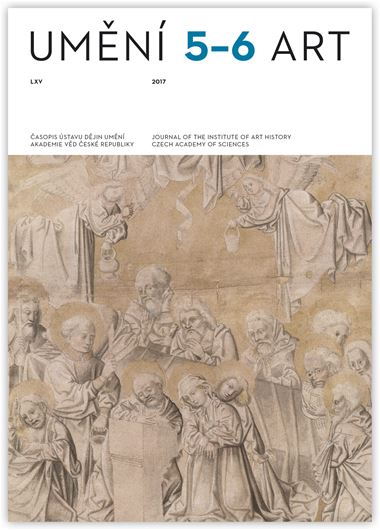Marie Rakušanová
Je kubismus, který je český, světový? Případ
Kubišta
The study examines the methodological tools used to interpret Cubism by the art history of the cultural hegemons and by Czech art history. The aim is to identify unconscious patterns of interpretation that, rather than enabling Czech art historians to establish a productive dialogue with their international counterparts, have, on the contrary, pushed them more to the margins of international discussions. The lack of understanding has of course been on both sides, and the study shows that even revisionist histories of art (and of Cubism in particular) have not generated tools that could be used to draw lessons from those areas of art that do not fit in to the universalistic canon. The study offers a critical revision of the art-historical postulate of Western structural linguistics and semiotics that sees a revolutionary re-evaluation of the concept of pictorial representation solely in the Cubism of Picasso. The study focuses also on the origin of key concepts in Czech art history — ‘Cubo- expressionism’ and ‘Picassism’ — and considers to what extent these terms were aimed at capturing characteristic features of local modernism and to what extent they reflect a tendency to mythologise local art and culture. Attention is also devoted to other methods favoured in Czech art history, which include biographism and a distinctive form of iconology that is enhanced with gestaltism. In its revision of existing interpretations of Western and local art historians, the study does not refute the values and methods of either of these art-historical discourses, nor does it seek to elevate the qualities of one methodological frame over another. Its goal is rather to draw attention to the points where the two sides’ views intersect as potential inspiration for future reciprocal transcultural dialogue. Ideas on the possibilities for communication between ‘Western’ and Czech art history and on establishing a coequal correlation between the homogenised canon of modernism and the heterogeneous art of Central Europe are applied in the study to one particular phenomenon in art history — the work of Bohumil Kubišta (1884–1918), who was a key actor in European early avant-garde activities. Assessments of Kubišta’s work problematised art-historical conceptions of Czech and Central European Cubism and its international contextualisation.
Full-text in the Digital Library of the Czech Academy of Sciences:
https://kramerius.lib.cas.cz/uuid/uuid:73e4d01e-b626-4b6a-b6d9-d0e6f0d41ad0
< back

